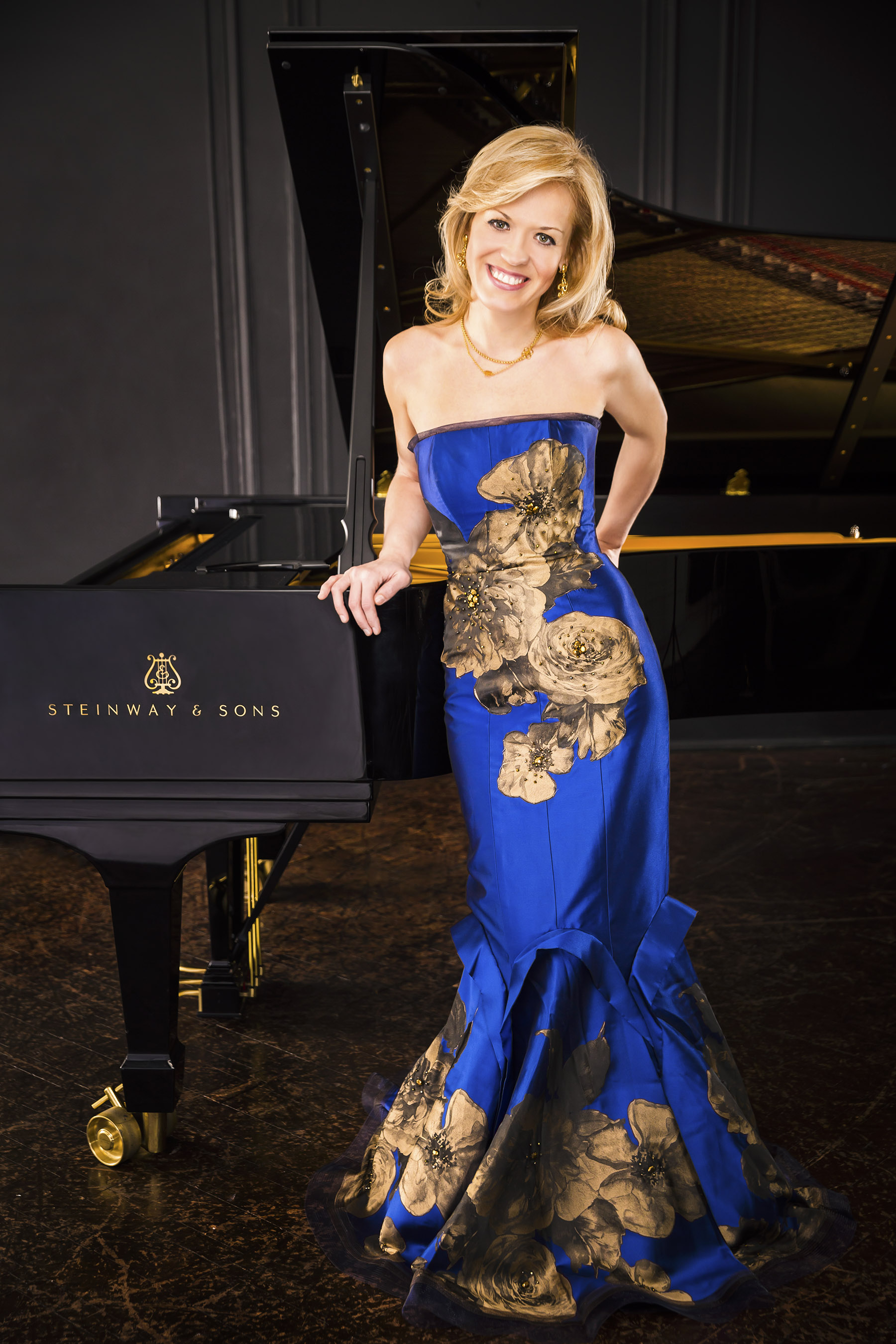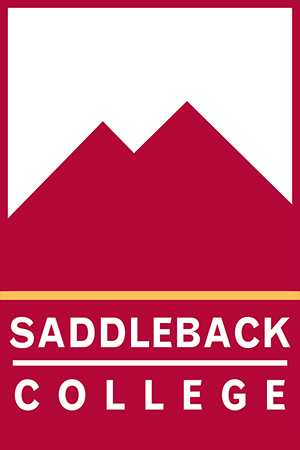Program Includes the Orchestra Lighting up the Stage with Respighi’s Arresting “Pines of Rome,” Dvorák’s Festive “Carnival Overture” and a World Premiere by Conrad Tao
Symphony’s Opening Night Celebration (dinner and party) takes place
Thursday, Sept. 22, 5 p.m. (Pre- and Post-Concert) at The Westin South Coast Plaza
Celebrating its 38th season and 10th year in the Renée and Henry Segerstrom Concert Hall, Pacific Symphony’s glorious opening night soars with extraordinary music to kick off the 2016-17 Hal and Jeanette Segerstrom Family Foundation Classical Series. Following on the heels of “America’s reigning diva,” Renée Fleming, performing with the orchestra on Sept. 13, the season officially launches Sept. 22-24 with a concert featuring one of today’s leading pianists, Olga Kern—of whom The Washington Post has written: “Call it star quality—music likes Kern the way the camera liked Garbo.”
While Kern tears up the piano with Rachmaninoff’s adrenaline-charged “Rhapsody on a Theme of Paganini,” the orchestra undertakes Dvorák’s joyous “Carnival Overture,” a much-anticipated world premiere by pianist and composer Conrad Tao, and Respighi’s breathtaking musical postcard, “Pines of Rome.”
The concert takes place Thursday through Saturday, Sept. 22-24, at 8 p.m. in the Renée and Henry Segerstrom Concert Hall. Tickets range from $25-$110. A preview talk with Alan Chapman begins at 7 p.m. For more information or to purchase tickets, please call (714) 755-5799 or visit www.PacificSymphony.org.
The 2016-17 Classical Opening Night Celebration and Concert (dinner, performance and party) is held Thursday, Sept. 22, at 5 p.m., with honors going to the Symphony’s outstanding musicians. Chaired by Jo Ellen Chatham, the black-tie affair features an elegant cocktail reception and pre-concert dinner in the Plaza Ballroom at The Westin South Coast Plaza. A post-concert party takes place at the hotel’s Terrace Pavilion with entertainment, dessert and an opportunity to mingle with musicians. Tables for 10 may be purchased for $7,500-$25,000; individual seats are $500. For more information, please contact the Symphony’s special events team at (714) 876-2364 or events@pacificsymphony.org. The event is sponsored by South Coast Plaza with musicians sponsor: Jaguar, Land Rover, Aston Martin of Newport Beach.
“Pacific Symphony is turning 38!” enthuses Maestro St.Clair. “What a glorious journey we continue! What we have accomplished together—our audience, community and the Symphony—is nothing short of miraculous in the world of American orchestras. The support we have felt from each member of the Symphony’s family has inspired us and lifted our musical spirits—and prepared us for another incredible season.
“For the grand opening, there are endless special moments of music that will be enhanced by our hall’s sonic beauty, including the brilliant Olga Kern,” St.Clair continues. “Olga is masterful in all her concertos, but when it comes to Rachmaninoff, it doesn’t get any better! She will dazzle everyone with this jewel of the piano repertoire.”

Considered a star among pianists, Kern, who began playing at age 5, was born into a Russian family of musicians with direct links to Tchaikovsky and Rachmaninoff. She jumpstarted her U.S. career with her historic Gold Medal win at the Van Cliburn International Piano Competition—the first woman to do so in more than 30 years. First-prize winner of the Rachmaninoff International Piano Competition at the age of 17, today Kern is a laureate of numerous international competitions and tours around the world. The New York Times calls her “an absolute whiz at the piano.” With her striking stage presence, passionate confidence and extraordinary musicianship, Kern was seemingly made to play Rachmaninoff’s titanic “Rhapsody on a Theme of Paganini.”
It was in 1934 that Rachmaninoff, having already completed four piano concertos, began a new concerto consisting of 24 variations on Paganini’s well-known violin theme (a theme that had already been used by various other composers—Franz Liszt, Johannes Brahms, among them). Written for solo piano and orchestra, “Rhapsody” premiered that same year in Baltimore, with Rachmaninoff playing the solo part. His piece is not a concerto in the conventional sense, having only one movement rather than the usual three, but it follows the tempo pattern of a typical concerto, beginning and ending briskly, with a slower middle section.
Most recognizable of Rachmaninoff’s variations is the lyrical 18th, which presents a melodic inversion of Paganini’s theme, with rising steps transforming into falling steps and back again.
Great moments continue with the Symphony’s inspirational rendition of Italian composer Respighi’s richly colored symphonic tone poem, “Pines of Rome.” Conjuring up vivid images of ancient Rome, the awe-inspiring piece achieved success at a time when opera dominated the music scene.
It is the second orchestral work in the composer’s “Roman trilogy,” written in 1924, preceded by “Fountains of Rome” (1917) and followed by “Roman Festival” (1928). Each of the four movements depicts pine trees around the ancient city at different times of the day and in changing settings; these include mysterious catacombs, children playing in the Borghese Garden and an Ancient Roman temple on a hillside. The last movement contains perhaps the most striking image—of an ancient soldier marching home triumphantly on Via Appia.
“ ‘Pines of Rome’ is one of the most vivid orchestral works in the repertoire—with its four separate sections each describing in musical sound the uniqueness of this magical place,” comments St.Clair of the piece placed last on the program. “It also uses the organ and off-stage brass, which will bring our season’s opener to a most rousing conclusion.”
The piece contains antique elements of Gregorian chants, which are a main trait of Respighi’s music; the sound of nature and the pre-recorded birdcalls (unusual in orchestral repertoire), and the festive atmosphere that Italy inspires. This work incorporates ancient plainchant and Italian folk melodies, and is kaleidoscopic in technical conception, demonstrating the brilliant orchestration the composer learned from Nikolai Rimsky-Korsakov. Challenging for any orchestra due to the amount of details in orchestral color, timbre, textures, rhythm, precision, phrasing, section coordination, endurance (for the brass), solo passages (etc.!)—“Pines of Rome” is a masterpiece.
Opening the program is another rich orchestral sketch. In Dvořák’s own program notes for his piece, “Carnival Overture,” he wrote: “A wanderer reaches the city at nightfall, where a carnival of pleasure reigns supreme. On every side is heard the clangor of instruments, mingled with shouts of joy and the unrestrained hilarity of people giving vent to their feelings in the songs and dance tunes.”
Dvorák, a strong advocate for his native Czech folk music, composed prolifically for symphony, concerto and chamber music, which at first resembled music by Mozart, Beethoven and Schubert. By the time he turned 50 in 1891, the composer began to write shorter orchestral works in the form of overtures and tone poems; he wrote “Carnival Overture” as the second in a trilogy of concert overtures, initially titled “Nature, Life and Love.” He later changed the names to “In Nature’s Realm, Carnival and Othello,” and gave each its own opus number. Dvořák used the same theme in all three overtures and intended them to be performed together, which is how he conducted them at the premiere. Today, however, only the “Carnival Overture” remains part of the standard orchestral repertoire.
From the opening bars, the joyous Overture explodes with sound, featuring the clanging of the triangle and the rattling tambourine, which captures the frenzied energy of the carnival. This is offset by a slower section, signaled by a blaring French horn, which then subsides into a quiet duet for flute and oboe. Without warning, the mad clamor of the opening music returns to conclude the overture with a jubilant shout.
Last but not least, the program offers a fascinating world premiere composed by renowned pianist Conrad Tao, who is rapidly emerging as a composer of great promise. His newly commissioned work’s title, “I Got a Little Wiggle That I Just Can’t Shake,” comes from the central montage of a 2010 film by Zach Clark, called “Vacation!” The work has two movements, “I got a little wiggle” and “I just can’t shake,” and is inspired by the Renée and Henry Segerstrom Concert Hall on its 10th anniversary.
“In its short decade, our hall has been heralded as one of the world’s great concert venues (it’s hard to believe it’s been our home for 10 years already!), and I wanted to commission a work for its anniversary that would capture its many facets,” explains St.Clair. “Conrad has made four visits to us as soloist, but at the same time, he has been making quite a name for himself as a composer with commissions from major orchestras. I knew he would offer us something new, fresh and vivid. He’s certainly composed a work with a title that piques interest!”
According to the composer, the piece uses as its primary musical material a series of short, rapid melodic “wiggles” introduced at the outset. Much of the music’s texture is skittish and layers of sound build on one another to finally unfold into a plush climax (indicated in the score to be played “with love!”), reinforced by the hall’s concert organ.
“The hall is alluring and sinuous, and I found myself attracted to the wavy sense of line that pervades the building,” says Tao. “I wanted to write a piece about those wavy lines. I imagined them colliding gleefully into one another in three-dimensional sonic space before
settling down into a more ordered fashion.”
Inaugurated by the Symphony in September 2006, this magnificent venue—with its exceptional acoustics and beautiful architecture—changed the world of symphonic music forever in Orange County. Both the orchestra and its audiences suddenly felt the ceiling to their musical opportunities open up to limitless possibilities. The trajectory of the orchestra sped up, allowing for broader choices in repertoire, greater ensemble excellence and immersive audience experiences—culminating, 10 years later, in this momentous season.
Pacific Symphony’s Classical Series is made possible by the Hal and Jeanette Segerstrom Family Foundation, with additional support from the Avenue of the Arts Hotel, KUSC and PBS SoCal. The opening weekend concerts are sponsored by South Coast Plaza. The 2016-17 piano soloists are sponsored by The Michelle F. Rohé Distinguished Pianists’ Fund.
Janelle Kruly
Public Relations and Social Media Manager
###


















